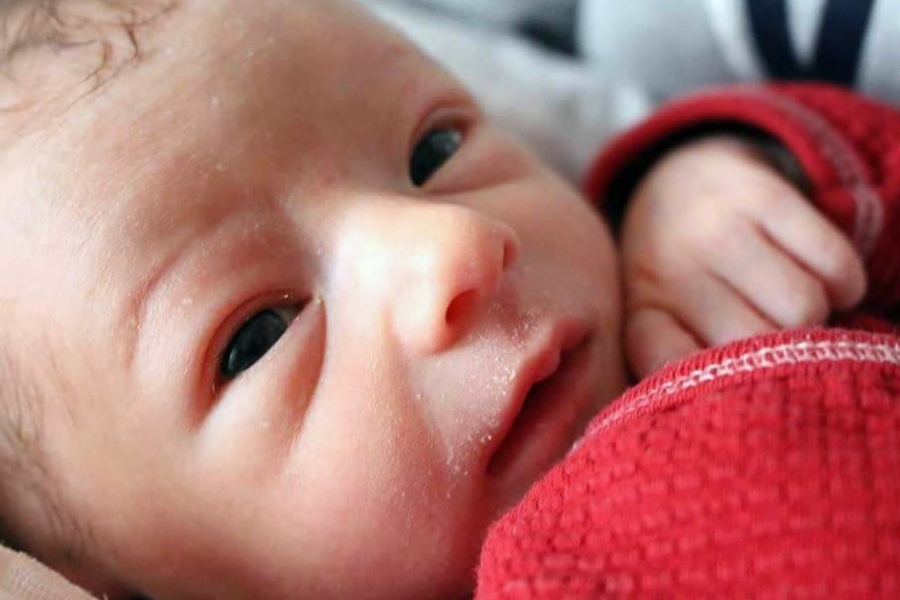
Baby Vision: A Plane Waiting To Take Off
25 Jul 2018 | 4 min Read
Dr Chirag Bhupatra Shah
Author | 2 Articles
Your baby’s eyesight at birth is generally weak and has little ability to focus on objects far away. At birth, your baby’s eyes are physically capable of seeing just fine, but his or her brain isn’t still ready to process so many images, so everything stays blurry for a few weeks.
Baby eyesight development gradually increases as her/his brain develops, giving him or her an intellectual understanding of the environment and processing it. Therefore, till then, your baby may prefer to see certain shapes or objects. Your face and eyes will be the most fascinating features for your baby.
The following is the eyesight development with age:
This will help you to know how far a newborn baby can see as well as other vision development. It is it is important to note that every child is different and thus baby eyesight development may vary in individual babies.
Birth to four months:
Your baby’s vision at birth has not yet developed the ability to differentiate or move their eyes between the two images and can only focus on objects 8 to 10 inches from their face. Babies usually prefer to see shapes and illuminated objects.
The eyes start working together and vision rapidly improves during the first months of your baby’s life, but eyes are not well coordinated and may appear to wander or to be crossed. However, if it appears that an eye is turning in or out continuously, get a baby vision test done. Babies usually start to follow moving objects with their eyes at around three months of age.
Five to eight months:
During these months, control and coordination of eye-body movement continues to improve. The ability to form a three-dimensional view and to judge if objects are nearer or farther away will be developed around the fifth month.
Your baby may even be able to identify something just by seeing only a part of it showing his or her understanding of object permanence, which is why your little one loves to play peekaboo. Also, by the end of seven months, your baby also develops ninety percent colour vision.
Nine to twelve months:
During 9 months of age, your baby’s vision is almost similar to an adult in its clarity and depth perception. By the end of eleven months, most babies will be crawling and trying to walk which will develop better eye-hand coordination. Also, babies can now calculate distances fairly well and throw things with accuracy.
One to two years old:
By the age of two, your child’s eye-hand coordination and depth perception will be well developed. Children are extremely inquisitive about their environment at this age.
The presence of eye problems in infants is usually rare and the signs of vision problem include:
- Excessive tearing
- Red or crusty eyelids – which could be a sign of an eye infection
- Continuous eye turning
- Extreme sensitivity to light
- Eye pain, itching, or discomfort
- Presence of a white or greyish pupil
- Eyes that look misaligned (crossed, turn out, or don’t focus together)
Seeing any of these signs should immediately prompt a visit to your paediatrician or ophthalmologist. However, there may be no warning signs in case of vision problems such as a lazy eye which is why it’s important at this time to have a baby vision test done.
Prematurely born babies are at greater risk for developing certain eye problems such as astigmatism (blurred vision), myopia (near-sightedness) and strabismus (eye misalignment).
Parents have a major role in baby eyesight development.
They should help their children crawl and try to make them walk, play with them using brightly coloured toys and show them different shapes and objects to improve their intellectual understanding, depth perception as well as eye-hand coordination. Also, researchers have shown that breastfeeding is essential to have a healthy and normal baby vision development.
Also read: Vision Problems In Children: Learn How To Identify And Correct Them
A


Related Topics for you
Suggestions offered by doctors on BabyChakra are of advisory nature i.e., for educational and informational purposes only. Content posted on, created for, or compiled by BabyChakra is not intended or designed to replace your doctor's independent judgment about any symptom, condition, or the appropriateness or risks of a procedure or treatment for a given person.
